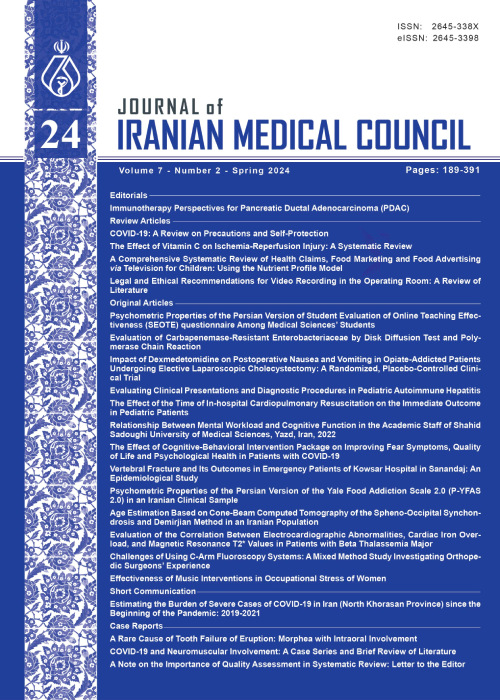Interdisciplinary Collaborations in the Pandemic Era Leading to Crisis Management and Medical Advances
More than three years after the all-society-inclusive outbreak of coronavirus disease 2019 (COVID-19) that quickly turned into a pandemic, situations have considerably improved, and public concerns have subsided. Nevertheless, about 800 million confirmed cases of COVID-19 and about seven million deaths have been reported to the World Health Organization (WHO) so far, and this pandemic is still far from over (1). However, now public awareness has increased, the virus is more predictable, communities are better prepared, the crisis has been contained, and in short, the disease and its subsequent concerns have been brought under control. But what led to this [imperfect] success? Certainly, this was beyond the power of one person, country, and discipline. It was a collaboration, a comprehensive collaboration of researchers and experts in basic and clinical sciences and medical specialties worldwide. The interdisciplinary approach has influenced the sciences more and more over time, aiming to overcome problems beyond the ability of a single science (2). This growing trend, which has rapidly been spreading over the last decades, is the solution to overcome crises like the COVID-19 pandemic. Interdisciplinary approaches in this era led to disease management, vaccine development, and better societal decisions. Basic science, with its curiosity-driven focus on understanding phenomena, served as a bridge connecting the laboratory to the clinic and the community and society to reach applied sciences, although it seems insufficient for the desired technological and medical applications. Indeed, basic sciences provided the necessary knowledge and understanding for further studies and applications. Current advances in clinical science are rooted in basic science research, so that without a background in basic research, applied science perspectives are incomplete and unstable (3). Bioinformatics and machine learning were two of the most important fields used to assess the situation, develop strategies, and decide on the appropriate response. In addition, physicists, chemists, and engineers developed protective and safety equipment, and biological scientists’ knowledge and science-centric research led to the development of diagnostic tools and vaccines (4,5). The production of effective vaccines, of which more than 13 billion doses have been injected worldwide, is one of the most prominent results of medical biotechnology collaborations (1,5). Collaboration and integration of science within medical specialties also caused beneficial results; the nature of COVID-19 with the involvement of different organs of the human body, including the respiratory system, the cardiovascular system, the digestive system, the nervous system, etc. (6), provoked and accelerated interdisciplinary collaborations. Interdisciplinary research clarified the mechanism of the disease being a multi-organ aggressor and proposed possible treatments, including anti-infective agents, organ-specific therapies, and complementary therapies to improve nutritional, inflammatory, and metabolic status (4,6,7). In the COVID-19 era, social scientists have modified social restrictions by considering the psychological and psychiatric effects, economists have explained resilience policies, and policymakers made their decisions by considering medical, economic, and social components (4,5). Although it may seem that the medical sciences have received most of the credit and prestige for overcoming the COVID-19 crisis, the role of other fields toward reducing their harms (3) and collaborating in this relative success is quite evident (8-10). It can be said that collaborations with an interdisciplinary approach in the pandemic era have led to pandemic collaborations and have produced an evidence-based, multidisciplinary science that can be used in crises.
- حق عضویت دریافتی صرف حمایت از نشریات عضو و نگهداری، تکمیل و توسعه مگیران میشود.
- پرداخت حق اشتراک و دانلود مقالات اجازه بازنشر آن در سایر رسانههای چاپی و دیجیتال را به کاربر نمیدهد.


